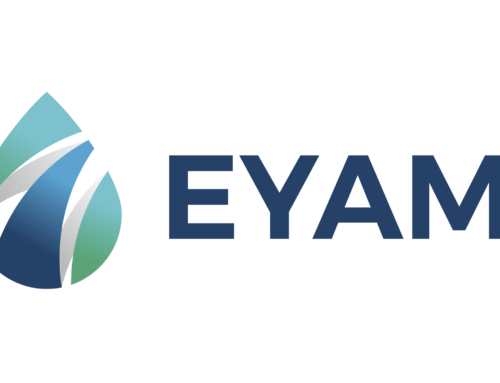Pandemic Preparedness: Unveiling the Hidden Peril
August 01, 2023
By Ryan M. Thomas
|
|
|
Pandemic Preparedness: Unveiling the Hidden Peril At Eyam we’re dedicated to advancing innovative technologies and are especially aware of the need to prepare against the danger of emerging, novel diseases. In this blog, we will delve into the impact of zoonotic diseases, the threat of gain of function research (GoF), and highlight the pivotal role of innovative technologies like Eyam’s Gemini and Jennerator platforms in combating these threats. In today’s interconnected world, zoonotic diseases pose an increasing threat to global health and wellbeing. These diseases, caused by pathogens that jump from animals into humans, have the potential to trigger devastating outbreaks and pandemics. In addition to the increasing risk of zoonotic diseases, we now find ourselves in a new world in which gain of function research (GoF) is being conducted to learn and sometimes to create potential biological weapons. Gain of Function (GoF) research is a controversial area of scientific study that involves enhancing the pathogenicity or transmissibility of pathogens in the laboratory. While some say GoF research may hold promise for advancing our understanding of infectious diseases and developing targeted therapeutics and vaccines, it also raises serious concerns about biosafety, biosecurity, and the potential for accidental or intentional release of dangerous pathogens. The double threat of spillover events from zoonotic diseases and the increasing possibility of an unnatural, manufactured disease make pandemic preparedness an essential component of every countries’ national security. Understanding the Emergence of Zoonotic Diseases The emergence of zoonotic diseases is a complex interplay of ecological, environmental, and human factors. As human activities increasingly encroach upon natural habitats, interactions with wildlife escalate, creating opportunities for pathogens to spill over into human populations. Deforestation, urbanization, exotic wildlife trade and poor sanitary conditions on factory farms are among the key drivers that facilitate these spillover events. As humans coexist in increasing numbers near wild animals, the change in climate patterns is also altering the distribution of disease vectors, such as mosquitoes, further fueling the emergence of zoonotic diseases. Livestock farming and especially large factory farms play a crucial role in zoonotic disease transmission. Intensive farming practices and the high density of animals provide ideal conditions for pathogens to spread. Diseases like avian influenza and swine flu have emerged due to the close proximity between animals and humans. Why are Zoonotic Diseases so Deadly to Humans?
The Impact of Zoonotic Diseases Zoonotic diseases have left an undeniable mark on human history, affecting populations across the globe. From the Black Death to the 1918 Spanish flu pandemic, these diseases have claimed countless lives and reshaped geopolitics. Following the Black Plague, the Protestant Reformation reshaped Europe, the 1918 Spanish flu and WWI ushered in the nation state, and today we see the unfolding consequences from the COVID pandemic. The rapid global spread of a virus, the overwhelming pressure on healthcare systems, and the economic and social disruptions have underscored the urgency of addressing zoonotic threats. Gain of Function (GoF) Research Just last week, a clandestine lab in California was discovered. The CDC discovered at least 20 different infectious agents in the lab as well as hundreds of mice that were being experimented on. The owner of the lab, Prestigious Biotech, is under investigation and health officials have launched an investigation to uncover the motives and operations of the lab. This story may turn out to be more hype than anything, but it’s a reminder of the portability of dangerous infectious diseases and new technology which has the power to bring these threats closer to our backyards. Gain of Function research refers to the deliberate manipulation of pathogens to increase their virulence, infectivity, or transmissibility. Scientists may alter the genetic makeup of pathogens through various techniques, such as genetic engineering or selective pressure, to study how these modifications influence the pathogens’ behavior. The stated goal is to gain insights into the mechanisms of pathogenesis, host-pathogen interactions, and immune responses, which can inform the development of effective countermeasures against infectious diseases. Why is Gain of Function Research Conducted? There are three main reasons given to defend GoF research:
Today, the use of powerful computing and artificial intelligence can simulate many of the benefits given for GoF research without the many risks. Some of the risks identified by opponents of GoF Research include:
Eyam’s Office of Pandemic Preparedness If you’ve been following our monthly blog, you know that we’ve developed the Jennerator Bioinformatics platform for the rapid design of vaccines and therapeutics. We’ve also created and validated a new pandemic ready delivery system, Gemini, which simplifies manufacturing and promises to deliver longer lasting and more effective vaccines. Last month, we shared the news of Eyam’s new Pandemic Preparedness Office, Sentinel AI. We’re actively working with industry partners to create an end-to-end solution for the rapid design, development, testing and manufacturing of vaccines and therapeutics for the future. Historically, vaccines have proven to be one of the most effective tools in controlling and eradicating infectious diseases. Yet, the conventional vaccine development process is time-consuming and has proven to be inadequate to respond swiftly to emerging zoonotic threats. This is where innovative vaccine platforms like Gemini hold tremendous promise. By harnessing the power of Gemini, Eyam will be able to rapidly respond to an emerging threat and scale vaccine production, enabling timely responses to new outbreaks. The Gemini Platform: A Pandemic Ready Platform Eyam’s Gemini platform is a potential game-changer in the battle against zoonotic or unnatural diseases. Gemini’s bi-functional self-amplifying nature allows for sophisticated, robust and sustained antigen expression, triggering a potent immune response. This heightened immunity is especially crucial in protecting vulnerable populations during outbreaks. The Gemini platform’s adaptability is a significant advantage in responding to emerging diseases. Its ability to incorporate multiple antigens in a single shot opens the door to developing vaccines targeting multiple pathogens simultaneously. This feature is invaluable in regions where zoonotic diseases have complex epidemiological patterns. One of the critical challenges in combating zoonotic diseases is the rapid mutation rate of certain pathogens, leading to the emergence of new strains. The Jennerator’s approach offers an advantage in responding to these mutations, by harnessing the power of artificial intelligence, Eyam can predict which antigens will create long term protection against future mutations. Leveraging the Jennerator with Gemini’s agile manufacturing capabilities will offer a new and effective path forward for improved vaccine efficacy and preparedness. Concluding Thoughts Eyam’s dual response, the Jennerator and Gemini, are laying the groundwork for the future work at the Office for Pandemic Preparedness. Eyam’s Gemini platform holds promise in revolutionizing the way we respond to these deadly infections. By combining cutting-edge science, global cooperation, and a commitment to public health, Eyam is dedicated to safeguarding humanity against the perils of emerging diseases. |
Pandemic Preparedness: Unveiling the Hidden Peril
August 01, 2023
By Ryan M. Thomas
|
|
|
Pandemic Preparedness: Unveiling the Hidden Peril At Eyam we’re dedicated to advancing innovative technologies and are especially aware of the need to prepare against the danger of emerging, novel diseases. In this blog, we will delve into the impact of zoonotic diseases, the threat of gain of function research (GoF), and highlight the pivotal role of innovative technologies like Eyam’s Gemini and Jennerator platforms in combating these threats. In today’s interconnected world, zoonotic diseases pose an increasing threat to global health and wellbeing. These diseases, caused by pathogens that jump from animals into humans, have the potential to trigger devastating outbreaks and pandemics. In addition to the increasing risk of zoonotic diseases, we now find ourselves in a new world in which gain of function research (GoF) is being conducted to learn and sometimes to create potential biological weapons. Gain of Function (GoF) research is a controversial area of scientific study that involves enhancing the pathogenicity or transmissibility of pathogens in the laboratory. While some say GoF research may hold promise for advancing our understanding of infectious diseases and developing targeted therapeutics and vaccines, it also raises serious concerns about biosafety, biosecurity, and the potential for accidental or intentional release of dangerous pathogens. The double threat of spillover events from zoonotic diseases and the increasing possibility of an unnatural, manufactured disease make pandemic preparedness an essential component of every countries’ national security. Understanding the Emergence of Zoonotic Diseases The emergence of zoonotic diseases is a complex interplay of ecological, environmental, and human factors. As human activities increasingly encroach upon natural habitats, interactions with wildlife escalate, creating opportunities for pathogens to spill over into human populations. Deforestation, urbanization, exotic wildlife trade and poor sanitary conditions on factory farms are among the key drivers that facilitate these spillover events. As humans coexist in increasing numbers near wild animals, the change in climate patterns is also altering the distribution of disease vectors, such as mosquitoes, further fueling the emergence of zoonotic diseases. Livestock farming and especially large factory farms play a crucial role in zoonotic disease transmission. Intensive farming practices and the high density of animals provide ideal conditions for pathogens to spread. Diseases like avian influenza and swine flu have emerged due to the close proximity between animals and humans. Why are Zoonotic Diseases so Deadly to Humans?
The Impact of Zoonotic Diseases Zoonotic diseases have left an undeniable mark on human history, affecting populations across the globe. From the Black Death to the 1918 Spanish flu pandemic, these diseases have claimed countless lives and reshaped geopolitics. Following the Black Plague, the Protestant Reformation reshaped Europe, the 1918 Spanish flu and WWI ushered in the nation state, and today we see the unfolding consequences from the COVID pandemic. The rapid global spread of a virus, the overwhelming pressure on healthcare systems, and the economic and social disruptions have underscored the urgency of addressing zoonotic threats. Gain of Function (GoF) Research Just last week, a clandestine lab in California was discovered. The CDC discovered at least 20 different infectious agents in the lab as well as hundreds of mice that were being experimented on. The owner of the lab, Prestigious Biotech, is under investigation and health officials have launched an investigation to uncover the motives and operations of the lab. This story may turn out to be more hype than anything, but it’s a reminder of the portability of dangerous infectious diseases and new technology which has the power to bring these threats closer to our backyards. Gain of Function research refers to the deliberate manipulation of pathogens to increase their virulence, infectivity, or transmissibility. Scientists may alter the genetic makeup of pathogens through various techniques, such as genetic engineering or selective pressure, to study how these modifications influence the pathogens’ behavior. The stated goal is to gain insights into the mechanisms of pathogenesis, host-pathogen interactions, and immune responses, which can inform the development of effective countermeasures against infectious diseases. Why is Gain of Function Research Conducted? There are three main reasons given to defend GoF research:
Today, the use of powerful computing and artificial intelligence can simulate many of the benefits given for GoF research without the many risks. Some of the risks identified by opponents of GoF Research include:
Eyam’s Office of Pandemic Preparedness If you’ve been following our monthly blog, you know that we’ve developed the Jennerator Bioinformatics platform for the rapid design of vaccines and therapeutics. We’ve also created and validated a new pandemic ready delivery system, Gemini, which simplifies manufacturing and promises to deliver longer lasting and more effective vaccines. Last month, we shared the news of Eyam’s new Pandemic Preparedness Office, Sentinel AI. We’re actively working with industry partners to create an end-to-end solution for the rapid design, development, testing and manufacturing of vaccines and therapeutics for the future. Historically, vaccines have proven to be one of the most effective tools in controlling and eradicating infectious diseases. Yet, the conventional vaccine development process is time-consuming and has proven to be inadequate to respond swiftly to emerging zoonotic threats. This is where innovative vaccine platforms like Gemini hold tremendous promise. By harnessing the power of Gemini, Eyam will be able to rapidly respond to an emerging threat and scale vaccine production, enabling timely responses to new outbreaks. The Gemini Platform: A Pandemic Ready Platform Eyam’s Gemini platform is a potential game-changer in the battle against zoonotic or unnatural diseases. Gemini’s bi-functional self-amplifying nature allows for sophisticated, robust and sustained antigen expression, triggering a potent immune response. This heightened immunity is especially crucial in protecting vulnerable populations during outbreaks. The Gemini platform’s adaptability is a significant advantage in responding to emerging diseases. Its ability to incorporate multiple antigens in a single shot opens the door to developing vaccines targeting multiple pathogens simultaneously. This feature is invaluable in regions where zoonotic diseases have complex epidemiological patterns. One of the critical challenges in combating zoonotic diseases is the rapid mutation rate of certain pathogens, leading to the emergence of new strains. The Jennerator’s approach offers an advantage in responding to these mutations, by harnessing the power of artificial intelligence, Eyam can predict which antigens will create long term protection against future mutations. Leveraging the Jennerator with Gemini’s agile manufacturing capabilities will offer a new and effective path forward for improved vaccine efficacy and preparedness. Concluding Thoughts Eyam’s dual response, the Jennerator and Gemini, are laying the groundwork for the future work at the Office for Pandemic Preparedness. Eyam’s Gemini platform holds promise in revolutionizing the way we respond to these deadly infections. By combining cutting-edge science, global cooperation, and a commitment to public health, Eyam is dedicated to safeguarding humanity against the perils of emerging diseases. |






